Compressed air can help power machines involved in construction, metalworking, and automotive care. But using the wrong pipe for this air system can put systems at high risk of structural harm. So what is the best pipe to use for compressed air? We researched for you and consulted with experts to give you the following answer.
Take note that there’s no end-all pipe to use for a compressed air system. Still, proficient technicians can choose among excellent options, including iron, stainless steel, aluminum, and copper. However, it’s not a good idea to use CVPC or PVC pipes for compressed air systems because of their relatively delicate constructions.
But take note that these materials have their distinct pros and cons. Understanding these advantages and shortcomings can help buyers choose the best pipe for their specific compressed air setups. Keep reading as we talk about the different piping materials in greater detail. We’ll also tackle other relevant information, such as the right pipe sizes for compressed air.
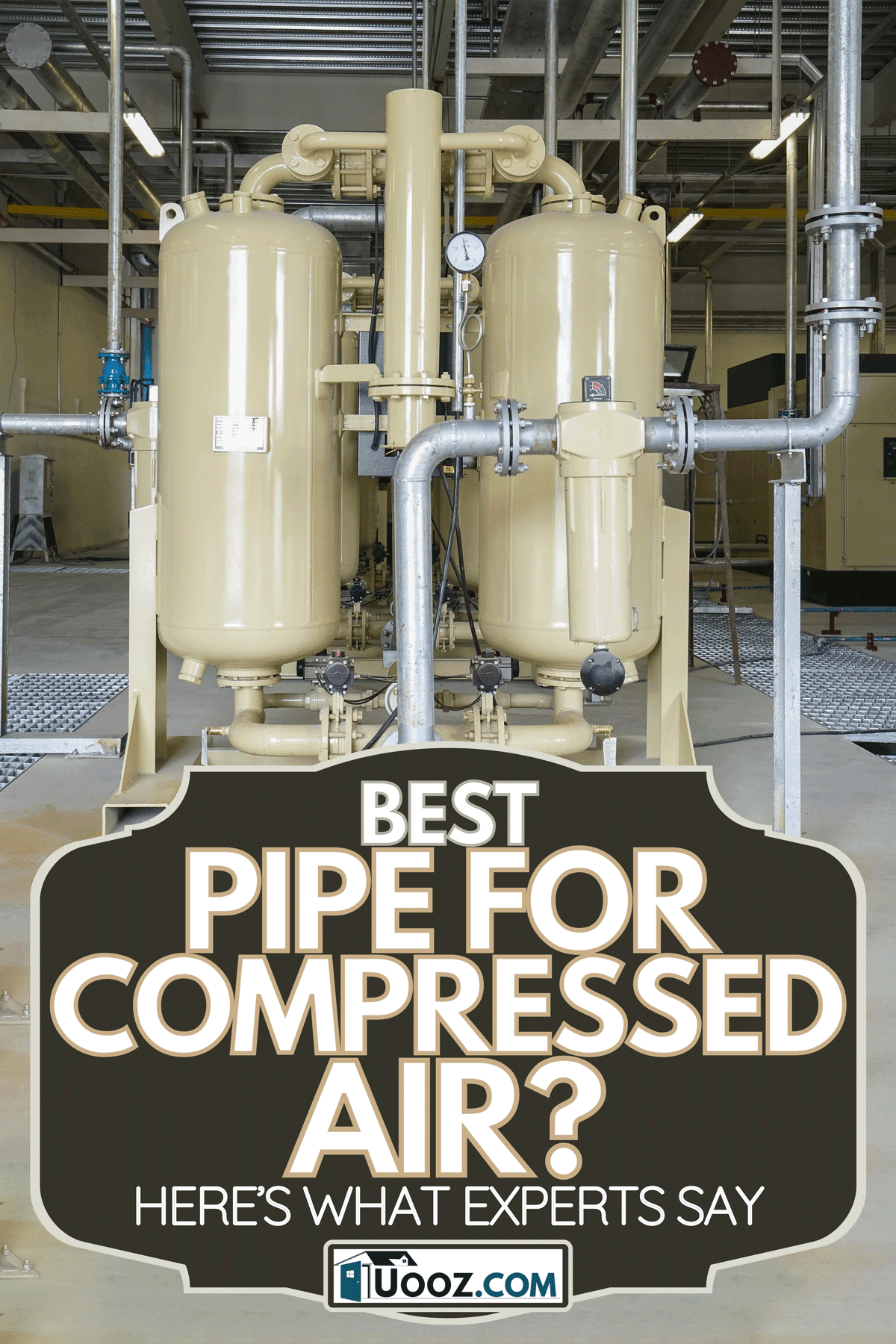
Can I Use CPVC Pipe For Compressed Air?
CPVC and PVC pipes aren’t advisable to use in compressed air systems because of the high-pressure gases flowing through systems can cause these materials to burst.
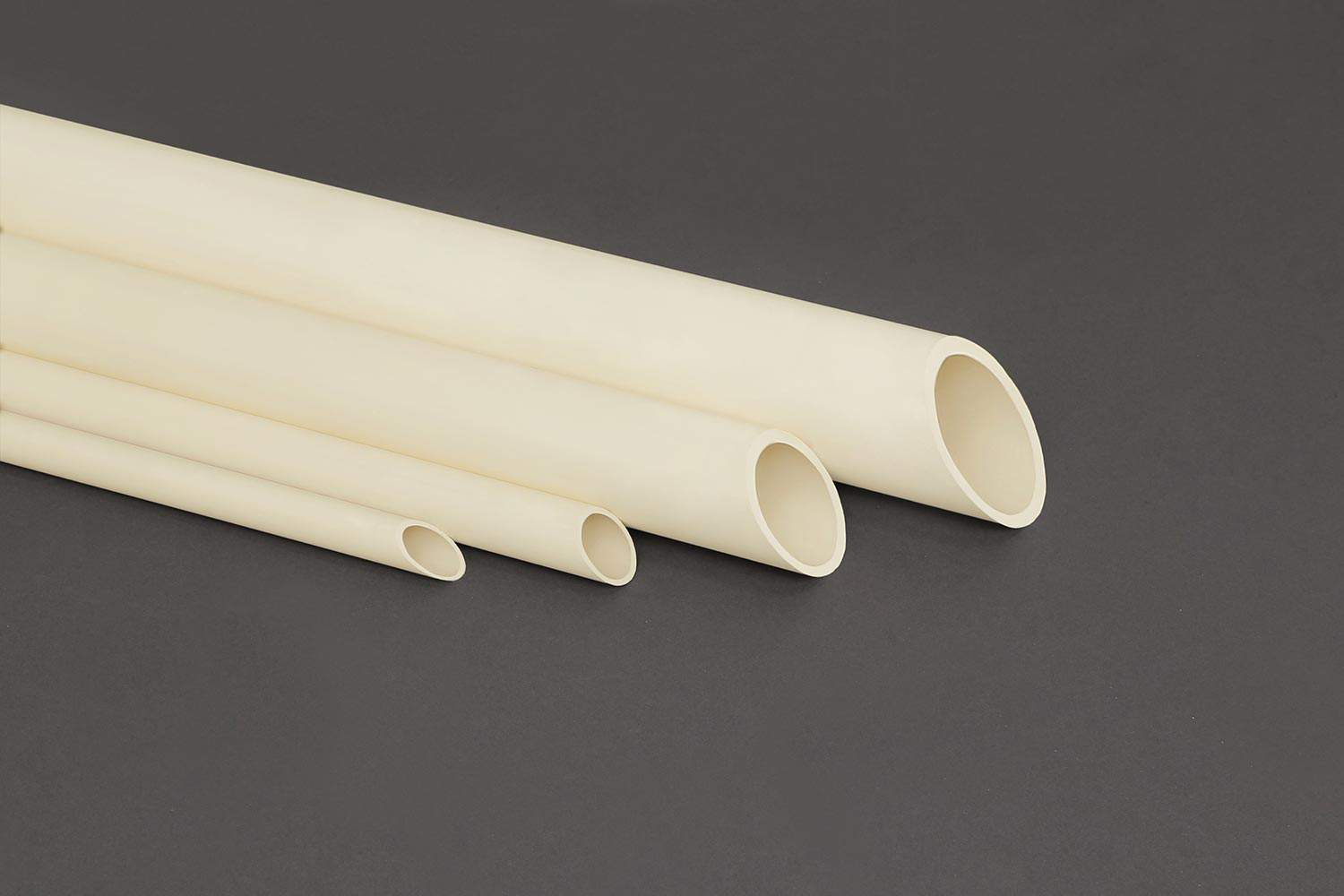
Take note that PVC stands for polyvinyl chloride -and its cousin, CPVC, means chlorinated polyvinyl chloride. Regardless of use and applied installation techniques, these two plastic fixtures cannot handle the sudden whipping actions present in compressed air.
What Is The Best Material For Compressed Air Piping Systems?
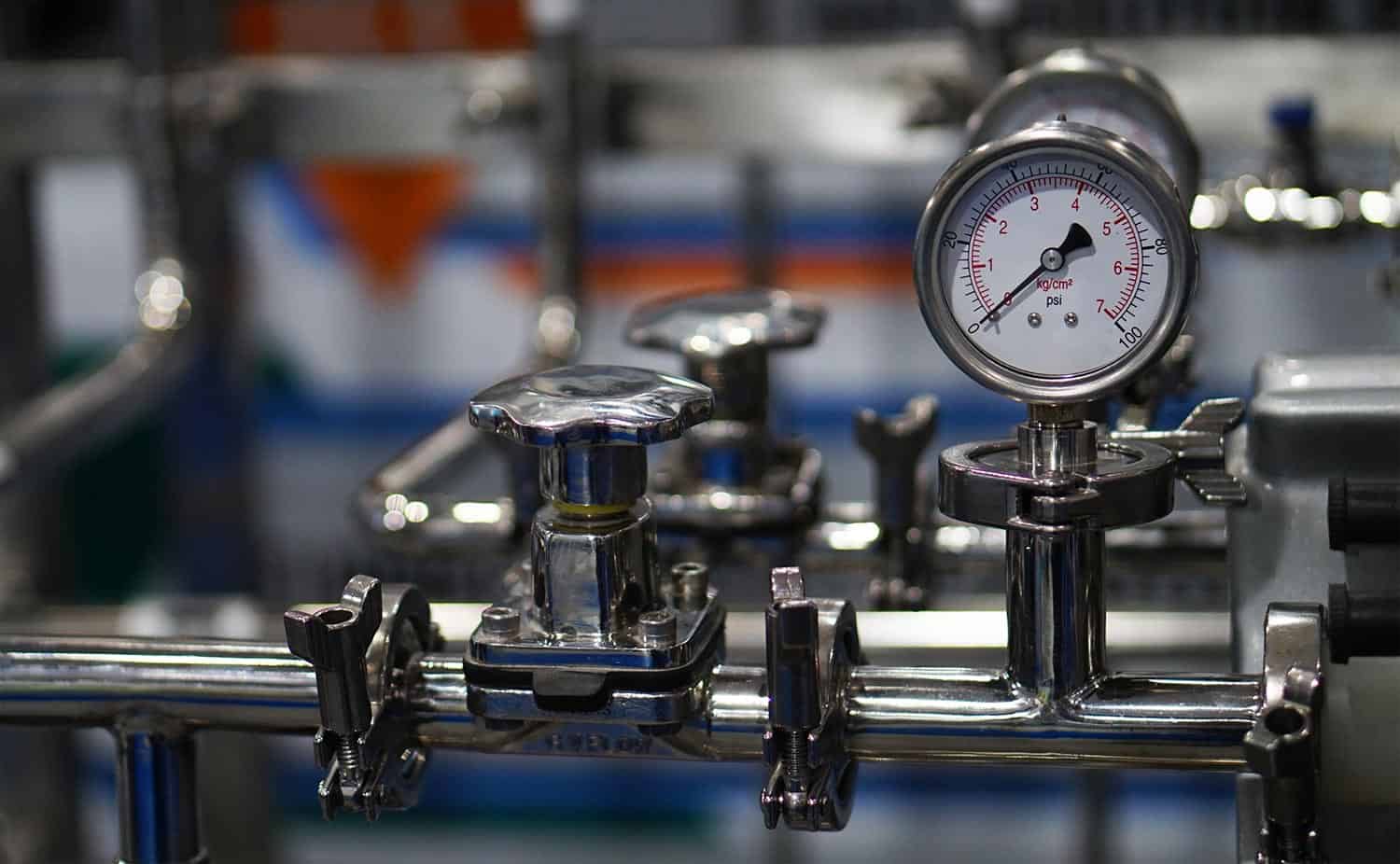
Choosing the correct material for compressed air piping systems can reduce the risks of system breakdowns and hazards to the well-being of nearby individuals. Below are some relatively common yet recommended choices for materials for compressed air pipes:
Iron
Iron plumbing fittings are reasonably easy to find. Also, this material is fairly inexpensive without sacrificing its ruggedness significantly. With those characteristics, iron pipe fittings can be excellent choices for compressed air systems.
However, iron can rust when exposed to moisture. Corroded iron pipes can lead to serious damage if left unchecked. Those who manage compressed air systems with iron fittings should pay close attention to rust indicators to prevent various hazards.
Stainless Steel
Stainless steel is a mixture of ferrous metals, including high traces of alloy. Pipe manufacturers that use this material can allow their customers to take advantage of different benefits, such as enhanced durability and corrosion resistance.
Individuals that know their way around compressed air frameworks can use stainless steel pipes for different purposes. This material is fairly flexible, allowing technicians handling the system to use flanged, grooved, or welded models confidently.
Check out this braided stainless steel hose connector for compressed air on Amazon.
Aluminum
Thanks to the material's range of advantages, many compressed air systems use aluminum alloy pipes. Typically made by combining elements like copper and zinc, these ingredients' benefits include a lightweight construction and corrosion resistance.
However, aluminum alloy pipes often come with more expensive costs than other materials like stainless steel. The tradeoff is the better durability and lifespan compared to its lower-quality cousins.
Check out this aluminum compressed air kit on Amazon.
Copper
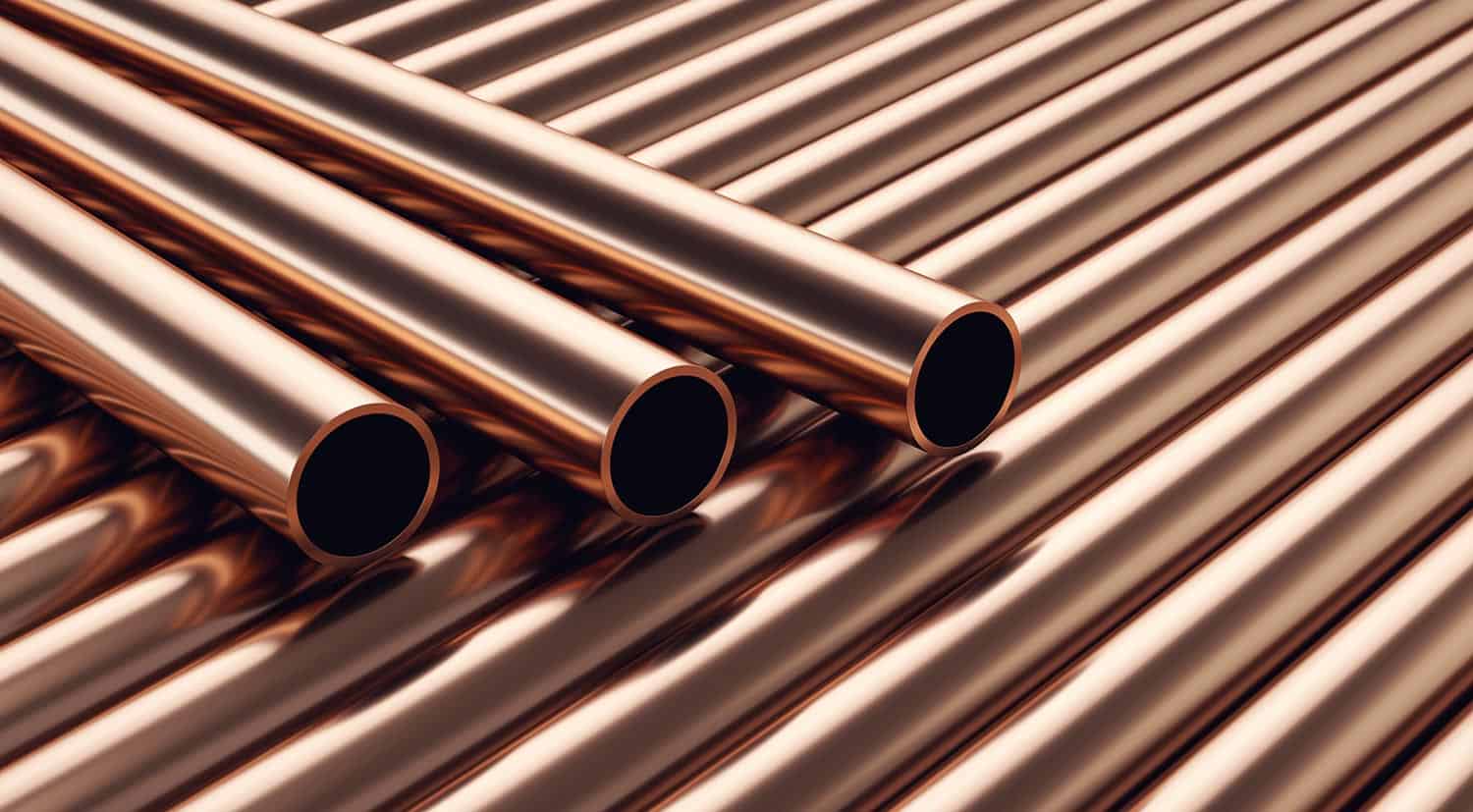
Like stainless steel, copper pipes can be great choices for compressed air systems because of their corrosion resistance. The material is fairly lightweight, making it reasonably easy to cut, weld, and hang. But like aluminum, copper can be expensive to install. Also, it can be time-consuming to set up properly.
Interested buyers looking to install copper pipes in their compressed air systems may want to look into using Type K options. Type K copper pipes generally have the thickest walls when compared to other selections. It’s also available in either a flexible or rigid form, providing users with different possibilities for their compressed air setups.
You can read our post on copper pipes and corrosion to gain additional insight into this material.
Check out this Type K copper pipe on Amazon.
Can You Use Black Pipe For Air Compressor Lines?
A black pipe can be a good choice for compressed air lines. Made with steel, interested buyers shouldn’t confuse a black pipe with galvanized steel despite both choices using the same material. The difference between the two is that galvanized steel pipes generally have zinc coatings while black pipes don’t.
That extra finish helps galvanized steel resist corrosion better than a typical black pipe. However, it also means that black pipes can be a better choice than galvanized steel piping in conveying gases.
Additionally, you can check out our post on the average lifespan of galvanized steel pipes to learn more about these fixtures.
Can HDPE Pipe Be Used For Compressed Air?
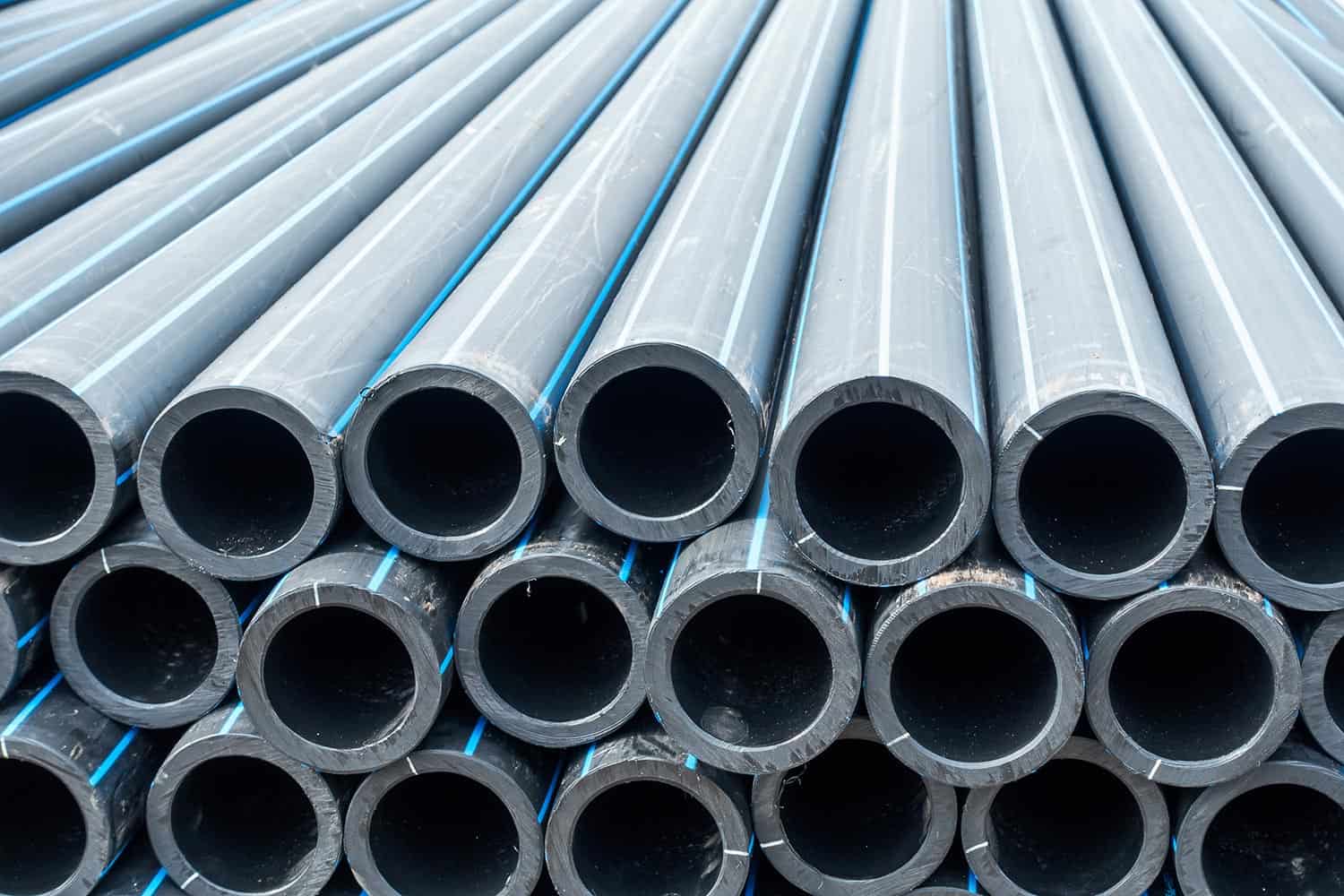
High-density polyethylene (HDPE) is another type of plastic that isn’t advisable to use in compressed air lines. Like CVPC and PVC, HDPE often has trouble withstanding compressed air nearing 100 PSI. Some members of the engineering community mentioned using HDPE pipes for compressed air systems.
The results were disastrous as the fixtures burst violently. This explosion can cause shrapnel to fly in different directions, causing harm to the system and nearby bystanders.
However, it might still be possible to use HDPE pipes with compressed air systems under certain setups. For instance, burying and safeguarding an HDPE pipe below ground may help increase the material’s resistance against dense air pressure up to about 170 PSI.
What Size Pipe Do I Need For Compressed Air Lines?
Pipes for compressed air lines need to pay attention to two important aspects: total airflow (CFM) and the minimum required operating pressure in pounds per square inch (PSI).
Total Airflow
Compressed air systems usually measure airflow in cubic feet per minute (CFM). A great CFM typically demands large pipes to avoid significant pressure drops.
Calculating for the necessary CFM often requires the use of complicated mathematical equations. But CFM calculators are available online to help reduce the guesswork and streamline this process.
Minimum Required Operating Pressure
Many industrial compressed air lines require operating pressures between 90 and 100 PSI to function well. A drop in PSI below 90 can indicate the presence of a leak in the system, which might be due to an incorrectly sized pipe. On the other hand, using a smaller pipe than needed may lead to an increase in pressure, increasing the risks of catastrophic damage within the system.
After identifying the coefficients from these essential elements, follow these steps to help you determine the correct size for your compressed air lines’ pipes:
- Draw a blueprint with every pipe and fitting needed for the framework. Ensure that you indicate the measurements for each fixture.
- Determine and add the straight runs used in the compressed air system. Label the overall measurement in feet.
- Add an extra length of equivalent distance for every bend, fitting, and valve. A 5-foot allowance should suffice for each bend or tee.
- Use the maximum CFM and the equivalent length while looking at a pipe size chart for compressed air systems to determine the appropriate size for the framework.
Final Words
Compressed air systems can use pipes made of iron, stainless steel, aluminum, or copper. But it’s not advisable to use CVPC or PVC pipes for these plastics aren’t durable enough to handle the pressure from the dense airflow. Those proficient in compressed air frameworks should also use correctly sized pipes to prevent serious damage like burst pipes.



